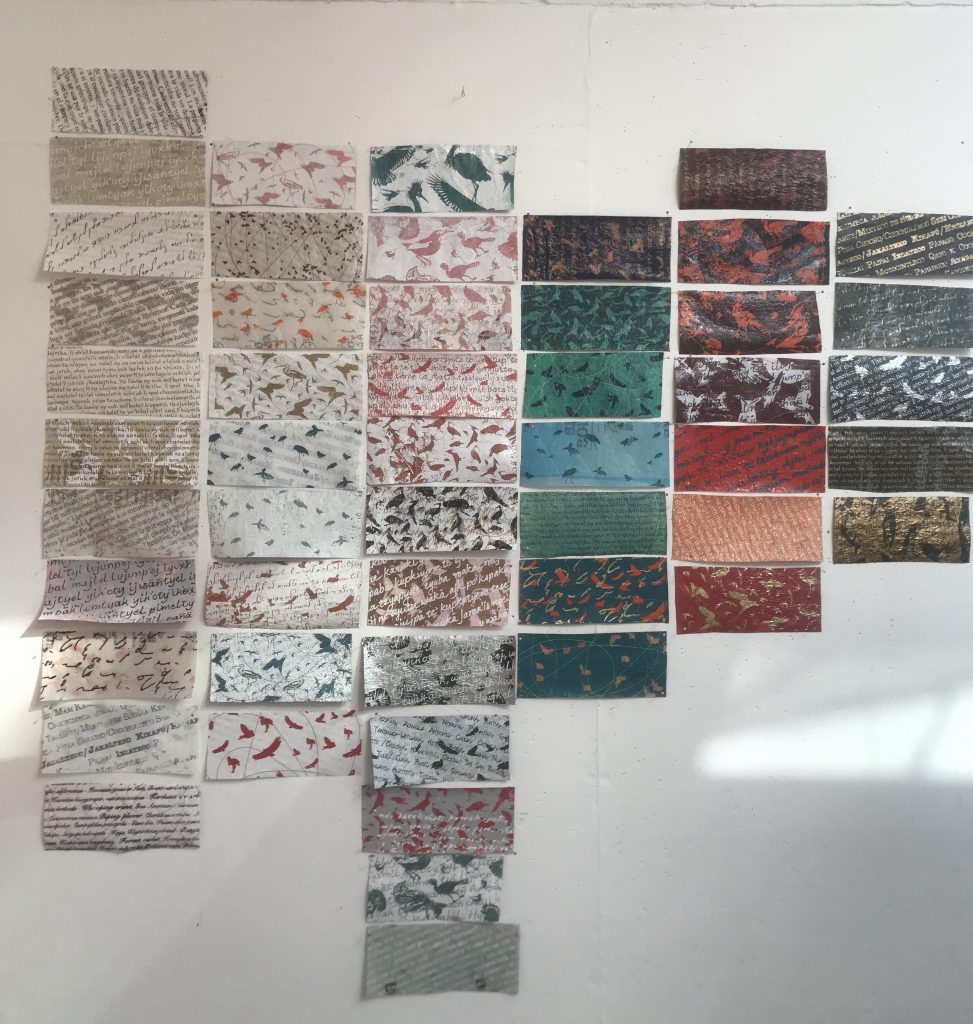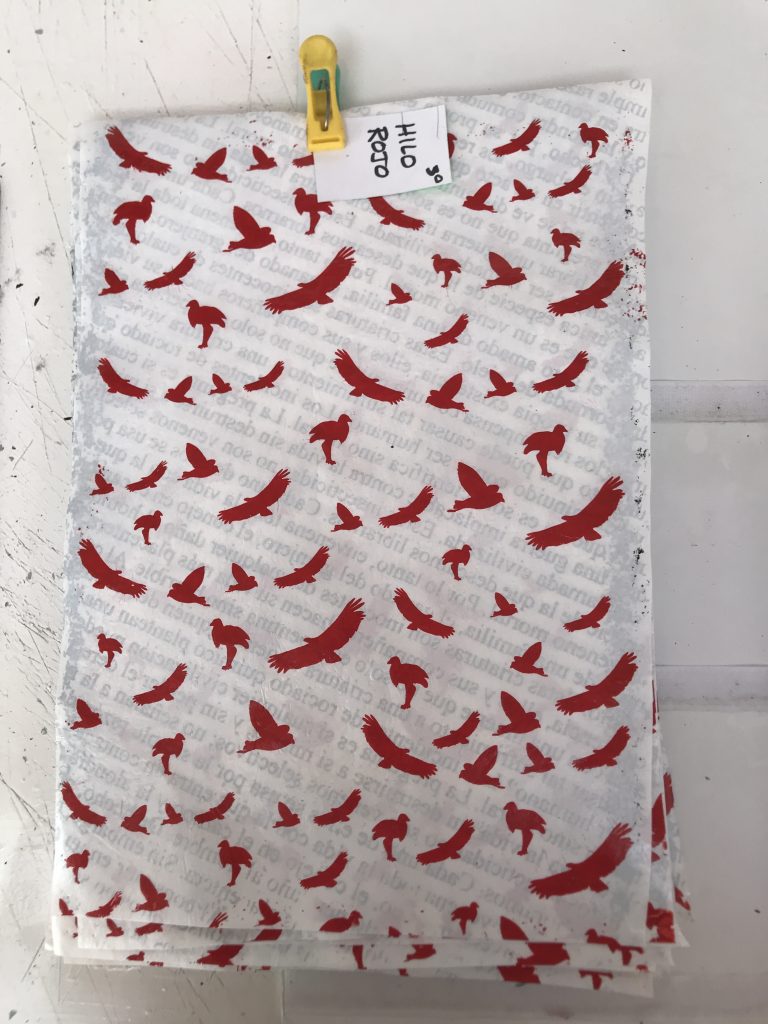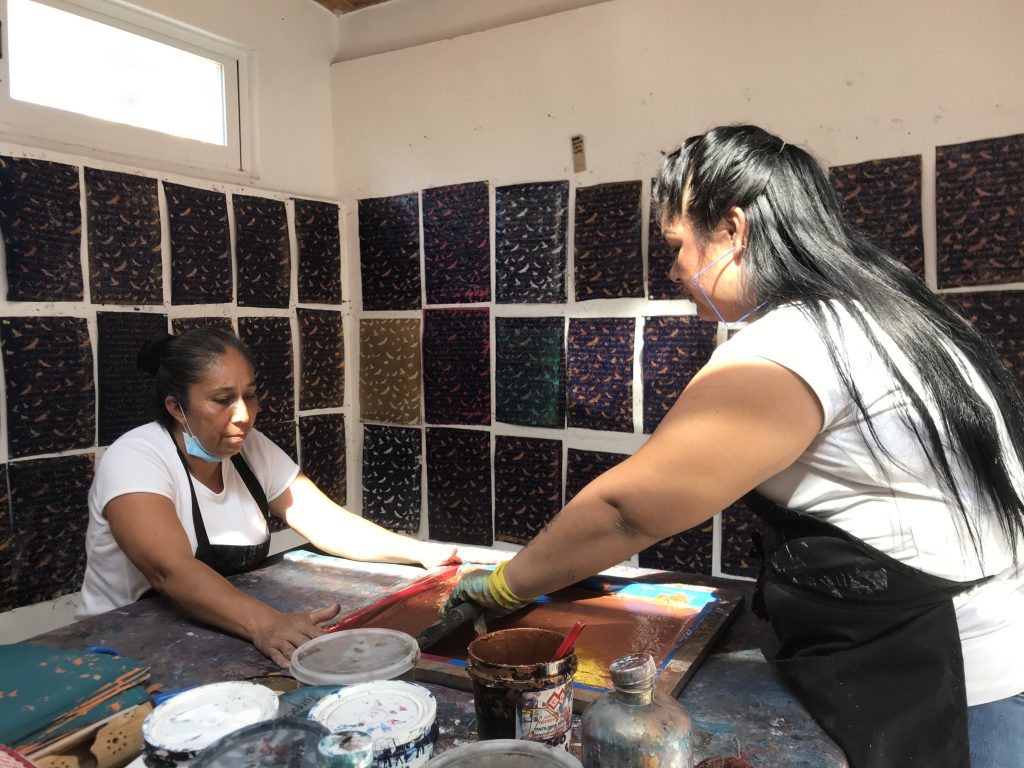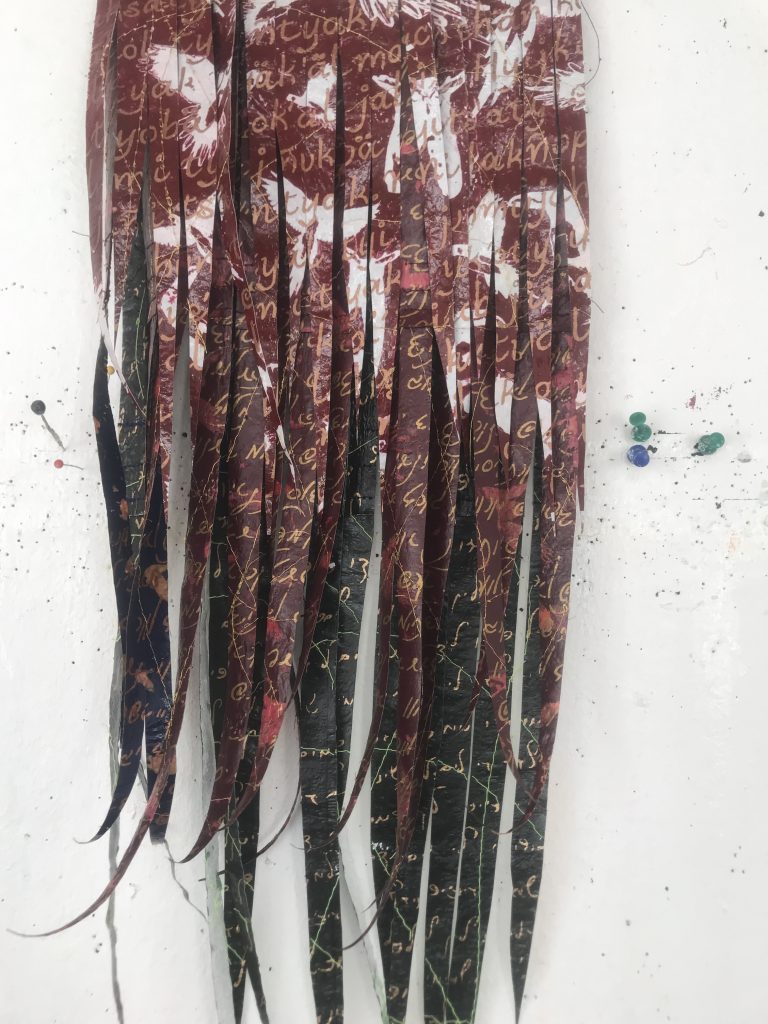Well besides the outcome of the election, which is on everyone’s minds in the US, I am actually thinking about other things related to art. Since you are one of my new Art Patrons, I thought I would let you into my head!
Although my first solo museum show is still 14 months away, I know that this time will go by fast. Next week I will meet with Sandra, my assistant, to make a master schedule of what we want to accomplish before the show opens and calendar these pieces so that we ensure that they get done.
I will write more about that in my next missive.

I can already anticipate that we will need to do A LOT more printing in order to have enough feathers for all the pieces we plan to make. This week, I had our other assistants, Alicia and Samantha (who are a mother and daughter-in-law), cut 4 x 8” samples that I pinned to the wall. I organized these samples by color and image. Since I am planning to make two white pieces there are three rows of white samples. One row has languages and the other two rows have bird images. Some of them have text overprints and some don’t. The next row is black and has languages in gold ink.Then I started a row of warm colors, a row of cool colors and a row of blacks.
With all this visual information on the wall, it’s easier to see what I need to fill in the gaps. Sandra is going to Guadalajara on Friday and can pick up more recycled plastic bags in colors that we need. And I can start programming printing for next week that will start filling in the color gaps that we need.
As you can see, there’s a lot of planning that goes into making the feathers! When I decide to make a piece in a monochromatic color scheme, I need to be sure that I have plenty of inventory on hand before I start working. Since there are so many steps to making the feathers, it would be frustrating to run out of them midway.
In addition to fusing the plastic bags together, they also need to be primed before printing. Then we print on both sides and sometimes we overprint, so there may be 2 – 4 printings for each set of plastic pages. The next step is sending them out for sewing. This is actually a two-step process. The first step is bringing the pages to a sewer who has a free-hand machine and can ‘draw’ the circular design we have developed on each sheet. We give her a note specifying what color thread to use. Then I set up groups of two and three sheets that get sewn together in lengths. When these sheets return to the studio I design groups of 3 different designs that are staggered so that each design shows. I sew these on my machine and then Alicia and Samantha cut them into the long feathers with tapered ends.

So you can see, with all these steps, I can’t just ask for something I need and expect to get it the next day! From start to finish, each set of feathers takes at least a week and sometimes more due to the sewers schedules. We are constantly working on this part of the process and creating more inventory. Sandra has trained Alicia and Samantha in how to do silk-screening and now they can work independently.
I hope you enjoy learning more about the studio processes and what it takes to make my artwork. If you still have questions, please let me know. I welcome getting ideas for new topics!



